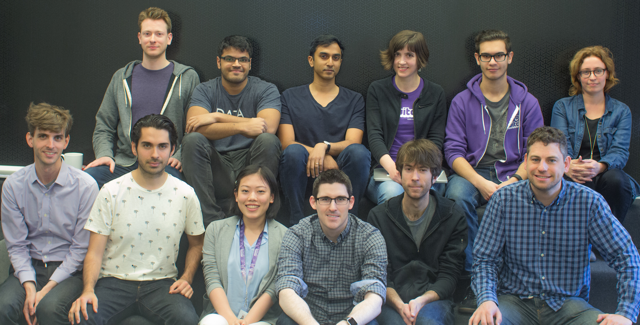The global gaming industry is a cultural and economic titan, a multi-billion dollar behemoth that eclipses the film and music industries combined. From blockbuster AAA games developed by thousands to viral indie games created by a single person, interactive entertainment has become a dominant force in modern life. Yet, this sprawling digital landscape grew from the humblest of origins: simple dots of light on a screen. To truly understand the state of modern gaming—from the latest PlayStation News and Xbox News to the nuances of Cloud Gaming—we must journey back through its rich and transformative history. This article charts the evolution of video games, exploring the technological leaps, cultural shifts, and business innovations that shaped the pixels on our screens and the communities that rally around them. We will trace the path from the noisy arcades of the 1970s to the interconnected, persistent online worlds of today, examining the key moments that defined generations of play.
The Genesis: From Arcades to the Living Room Couch
The story of commercial video games begins not in a home, but in the dimly lit, vibrant social hubs of the 1970s and 80s: the video arcade. This era laid the foundational gameplay loops and design philosophies that still echo in Game Design today.
The Golden Age of Arcades
Before the concept of PC Gaming or Console Gaming became mainstream, entertainment was a quarter away. Nolan Bushnell’s Atari unleashed Pong in 1972, a simple table tennis simulation that became a commercial sensation and proved the viability of video games as a business. This was followed by an explosion of creativity. Taito’s Space Invaders (1978) introduced the concept of a “high score,” igniting the spirit of Competitive Gaming. Namco’s Pac-Man (1980) became a cultural icon, demonstrating that games could have character and appeal beyond simple shooting mechanics. These early titles, hallmarks of Retro Gaming, were built on a simple premise: easy to learn, difficult to master, and designed to keep players inserting coins.
The Crash and the Console Renaissance
The initial success of home consoles like the Atari 2600 led to a market oversaturated with low-quality titles, culminating in the infamous video game crash of 1983. This event was a critical pitfall, teaching the fledgling Gaming Industry a harsh lesson about quality control. The savior arrived from Japan. In 1985, the Nintendo Entertainment System (NES) launched in North America, reviving the home console market. Nintendo’s masterstroke was the “Nintendo Seal of Quality,” a promise to consumers that games on their platform met a minimum standard. This move rebuilt consumer trust and paved the way for legendary franchises like Super Mario Bros. and The Legend of Zelda, which defined the platformer and action-adventure genres for decades. The history of Nintendo News is rooted in this legacy of quality and innovation.
The First Great Console War
The late 80s and early 90s were defined by the first true “console war” between Nintendo’s Super Nintendo (SNES) and the Sega Genesis. This rivalry pushed hardware and marketing to new heights. Sega’s “blast processing” campaign and its edgy mascot, Sonic the Hedgehog, targeted a cooler, older demographic, directly contrasting with Nintendo’s family-friendly image. This era was a crucible for game development, producing timeless RPG Games like Chrono Trigger and Final Fantasy VI on the SNES, and fast-paced action titles on the Genesis. The competition fueled innovation in both hardware and software, a pattern that would repeat throughout Gaming History.
A New Dimension: The Polygon Revolution and PC Gaming’s Ascent
The mid-1990s marked a seismic shift in Gaming Tech. The transition from 2D sprites to 3D polygons fundamentally changed how games were made and experienced, while the personal computer emerged as a powerful and versatile gaming platform.

The 32/64-Bit Era: PlayStation Changes Everything
While Sega and Nintendo continued their rivalry, a new player entered the ring: Sony. The original PlayStation, launched in 1994, was a game-changer. By embracing the CD-ROM format, it offered developers massive storage space, enabling cinematic cutscenes, high-quality audio, and sprawling 3D worlds previously unimaginable. Titles like Final Fantasy VII and Metal Gear Solid demonstrated a new level of narrative maturity and production value, attracting an older audience and solidifying gaming as a mainstream adult hobby. The Nintendo 64, while sticking to cartridges, pushed the boundaries of 3D gameplay with its analog stick Game Controllers and genre-defining titles like Super Mario 64 and The Legend of Zelda: Ocarina of Time.
The PC Gaming Powerhouse
Simultaneously, PC Gaming was carving out its own identity. The open nature of the platform fostered genres that were difficult to replicate on consoles. First-Person Shooters (FPS Games) like id Software’s DOOM and Quake pioneered true 3D environments and online deathmatches. Real-Time Strategy (Strategy Games) flourished with titles like Warcraft and StarCraft. The PC was also the birthplace of the Massively Multiplayer Online RPG (MMORPG), with Ultima Online and EverQuest creating persistent online worlds where thousands of players could interact. This era was driven by rapid advancements in Gaming Hardware, especially the rise of dedicated Graphics Cards from companies like 3dfx, which made photorealistic graphics a tangible goal.
The Birth of Online Multiplayer and Modding
The PC’s connectivity fostered the growth of online communities. LAN parties gave way to internet-based services like Blizzard’s Battle.net, which made finding a match in Diablo or StarCraft seamless. This period also saw the explosion of Game Mods—modifications made by the community that altered or created new experiences from existing games. The most famous example is Counter-Strike, a mod for Valve’s Half-Life that became a global phenomenon and a foundational pillar of Esports News. This user-generated content movement, powered by development tools like the early versions of what would become the Unreal Engine, proved that the Gaming Community could be co-creators, not just consumers.
The Connected Age: Online, Mobile, and the Creator Economy
The 21st century connected the world like never before, and gaming was at the forefront of this digital revolution. Online ecosystems, mobile devices, and streaming platforms transformed gaming from a product into a persistent, evolving service.
The High-Definition Console Wars and Online Ecosystems
The era of the Xbox 360, PlayStation 3, and Nintendo Wii standardized high-definition graphics and robust online services. Microsoft’s Xbox Live became the gold standard for online multiplayer, introducing achievements, friends lists, and a unified digital marketplace. Sony’s PlayStation Network followed suit, creating a connected ecosystem for its users. This generation cemented online play as a core feature, not an afterthought. Meanwhile, the Nintendo Wii, with its motion-sensing Wii Remote, focused on accessibility, bringing families and non-traditional gamers into the fold and demonstrating that innovative input devices could be as important as raw processing power.
The Mobile and Indie Game Explosion

The launch of Apple’s iPhone in 2007 and its App Store created an entirely new market: Mobile Gaming. Simple, addictive games like Angry Birds and Fruit Ninja reached a massive, unprecedented audience. This accessibility, combined with the rise of digital distribution platforms like Steam on PC, democratized game development. Suddenly, small teams or even individuals could create and publish their games globally. This led to an explosion of creative and innovative Indie Games. Titles like Braid, Limbo, and most notably Minecraft, showed that a compelling vision could compete with the massive budgets of AAA Games. The latest Steam News and Epic Games News often highlight the continued success of this vibrant sector.
The Rise of Esports and Game Streaming
While competitive gaming had existed for years, the 2010s saw it professionalize into the global spectacle of Esports. Games built for competition, like the MOBA Games League of Legends and Dota 2, and tactical shooters like Counter-Strike: Global Offensive, drew millions of viewers and offered life-changing prize pools. This spectator culture was fueled by the rise of Game Streaming platforms, primarily Twitch. Streamers became entertainers and influencers, building massive communities around their gameplay and personalities. Suddenly, watching people play video games became as popular as playing them, creating a new layer of the Gaming Culture and generating endless Twitch News.
The Horizon of Gaming: Current Trends and Future Frontiers
Today, the gaming landscape is more diverse and dynamic than ever. Technology and business models are evolving at a breakneck pace, pointing toward a future where gaming is more accessible, immersive, and integrated into our daily lives.
Cloud Gaming and Subscription Services

Cloud Gaming services like Xbox Cloud Gaming and NVIDIA GeForce NOW are changing how we access games. By streaming games from powerful remote servers to any screen—a phone, a tablet, or a low-end laptop—they remove the need for expensive Gaming PCs or consoles. This is complemented by the “Netflix for games” model of subscription services like Xbox Game Pass and PlayStation Plus, which offer access to a vast library of games for a monthly fee. This shifts the industry from individual game sales to a recurring revenue model, fundamentally altering the economics of Game Releases.
Immersive Realities: VR and AR Gaming
Virtual Reality (VR Gaming) and Augmented Reality (AR Gaming) represent the next frontier in immersion. VR headsets like the Meta Quest 3 and PlayStation VR2 place players directly inside the game world, offering an unparalleled sense of presence. While still a niche market, titles like Half-Life: Alyx showcase its incredible potential. AR, on the other hand, overlays digital information onto the real world, with Pokémon GO being the most successful example. As this Gaming Tech becomes more affordable and comfortable, it promises to unlock entirely new forms of play.
The Live Service Revolution
Many of today’s biggest titles, particularly in the Battle Royale genre like Fortnite, Apex Legends, and Call of Duty: Warzone, are “Games as a Service” (GaaS). These games are free-to-play and are monetized through in-game purchases like battle passes and cosmetic items. They are not static products but evolving platforms that receive constant updates with new content, events, and features. This model fosters long-term engagement and massive player communities, but also raises ongoing discussions within the Gaming Industry about monetization ethics and developer burnout.
Conclusion: The Ever-Evolving Game
The journey through Gaming History is a story of relentless innovation. From the simple beeps of Pong to the sprawling, photorealistic worlds powered by cutting-edge Graphics Cards and game engines like Unreal Engine, video games have consistently pushed the boundaries of technology and art. Each era—the arcade, the 8-bit revival, the 3D revolution, and the online age—built upon the last, driven by fierce competition, creative genius, and an ever-growing global Gaming Community. Today, gaming is more than just a hobby; it is a platform for social connection, a professional sport, a medium for storytelling, and a frontier for technological advancement. As we look toward a future of cloud-based access, virtual realities, and AI-driven experiences, one thing is certain: the game is far from over. It’s just loading the next level.












